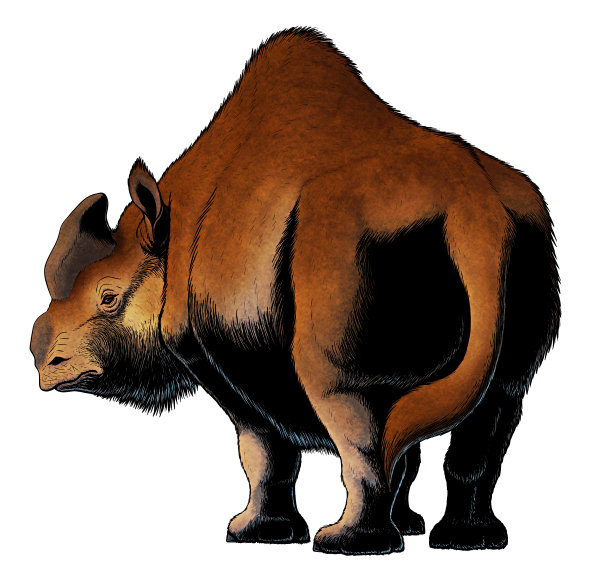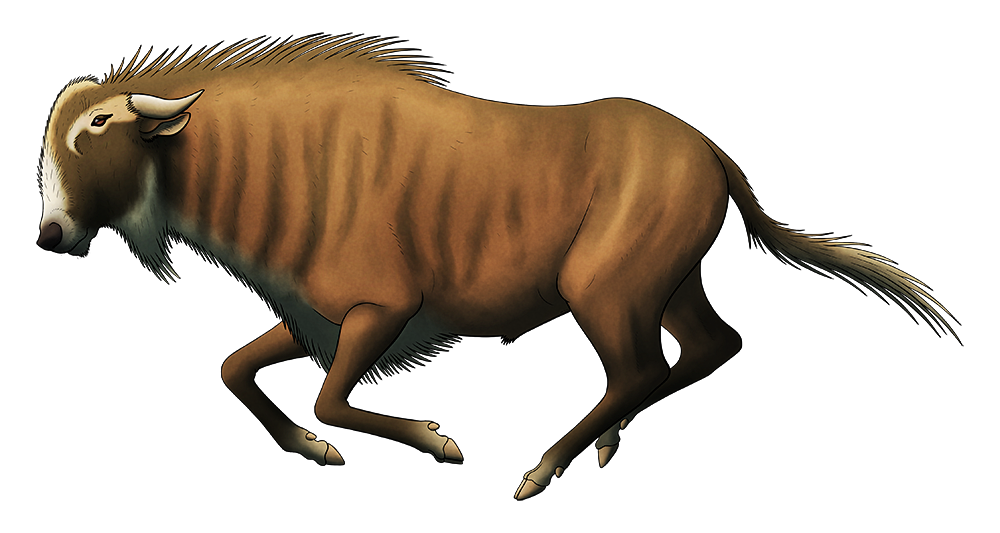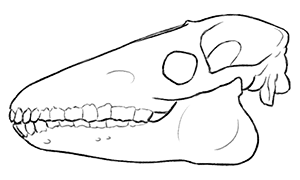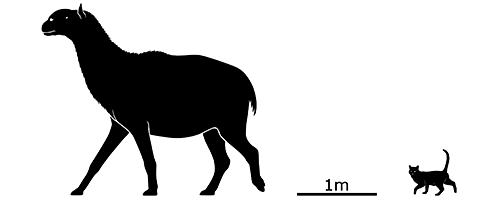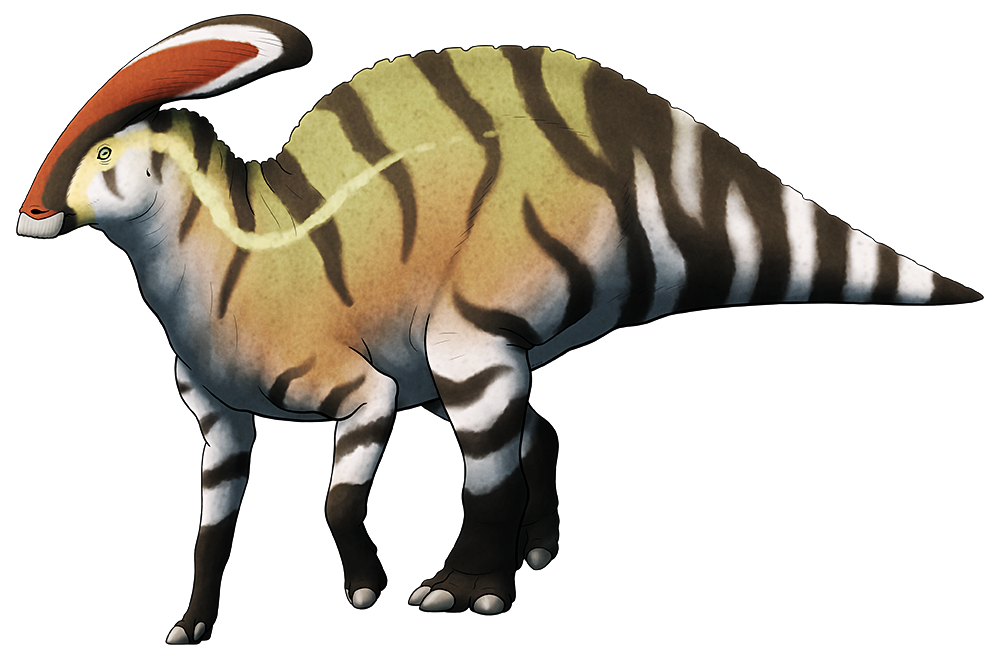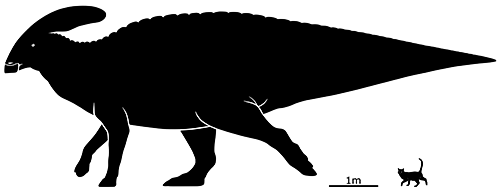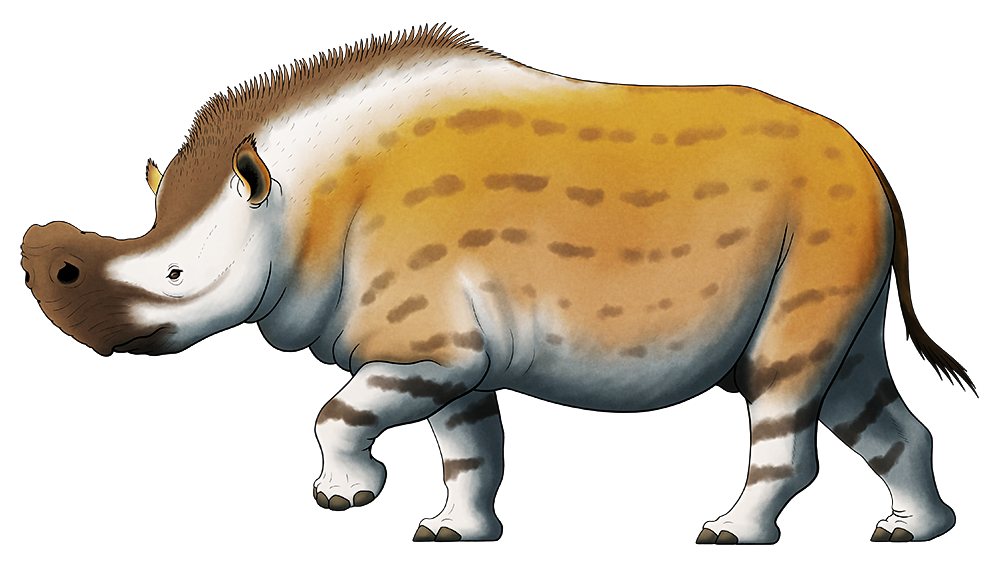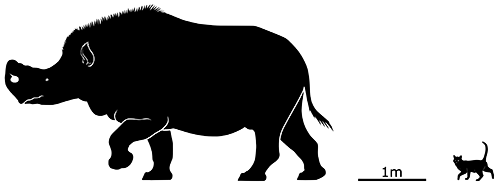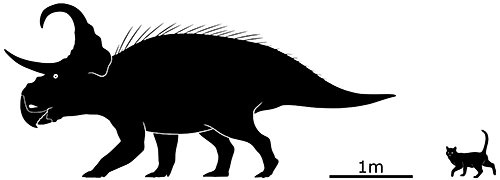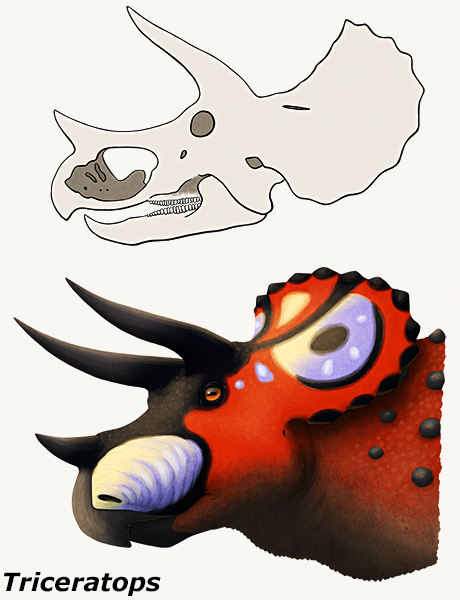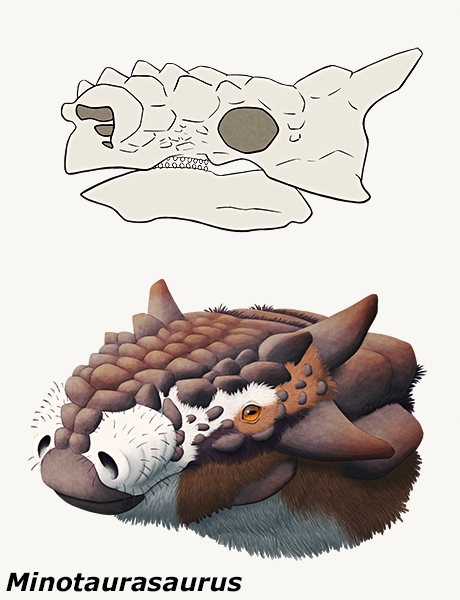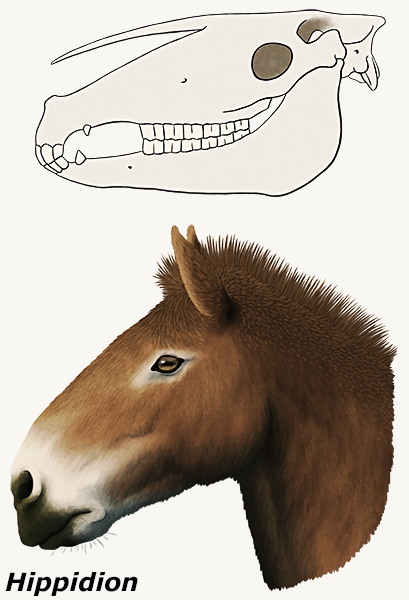Elasmotherium sibiricum was a giant rhinoceros that lived during the mid-to-late Pleistocene epoch, between about 800,000 and 39,000 years ago. Found across much of the Eurasian steppe dry grassland environments, it stood around 2.5m tall (8’2″) at the top of its humped shoulders and weighed about 4 tonnes (4.4 US tons), making it close in size and mass to a modern elephant.
It was the last known representative of a particularly ancient lineage of rhinos, last sharing a common ancestor with modern forms over 40 million years ago.
A large bony dome on its forehead is traditionally thought to have supported an enormous keratinous horn like the distantly-related woolly rhino, but a 2021 study has recently challenged that interpretation. The dome structure was actually rather thin-walled and wouldn’t have been able to support the weight of a giant horn, instead probably being covered by a much stumpier backwards-pointing nub – while an enlarged nasal cavity inside the dome also suggests it may have actually functioned as a resonating chamber, similar to the crests of hadrosaurs or the extinct wildebeest Rusingoryx.
It also had a smaller toughened “pad” on its nose that may have been used along with a prehensile upper lip to dig around in the soil for plant roots and tubers.

